Every Taylor Swift Album Ranked
The pop star released her 11th album, The Tortured Poets Department, last Friday.
Photo by Sarah Yenesel/EPA-EFE/Shutterstock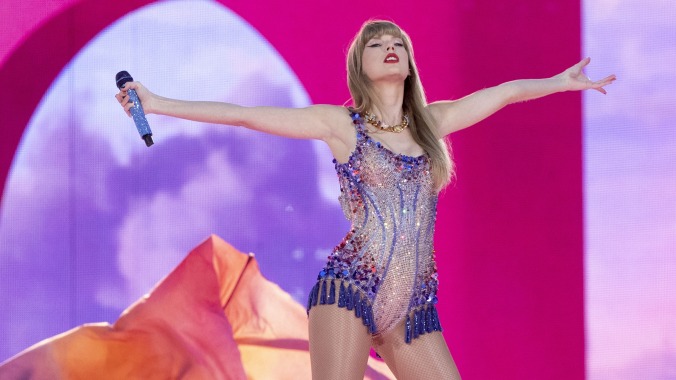
This is the summer of reclaiming girlhood. Just last year, the streets were a sea of pink as people of all ages streamed into movie theaters to behold Greta Gerwig’s Barbie movie—a film that’s ultimately about the complexities and beauty of womanhood—which busted the record for the biggest opening weekend by a female director ever. Meanwhile, Taylor Swift fans are filling the country’s biggest arenas weekend after weekend to swap friendship bracelets, get dressed up to the nines in whatever their hearts desire, and celebrate the music of their lives.
Of course, the music of Taylor Swift is for everyone of all genders, but what better time to revisit her discography than the summer of big female feelings? Taylor Swift’s music, much like Barbie dolls, rom-coms, and about a million other things beloved by women and girls, have been ridiculed and casted as trivial. But something has shifted recently. There’s been plenty of (though still not enough) appreciation for female friendship and feminism in the past, but regular ol’ female joy is finally having its moment in the spotlight. And chances are you or someone you know gets a lot of joy from Taylor Swift.
Only now, 18 years into her career, are some people starting to take Taylor Swift seriously. But for those of us who have been there since the first teardrop on her guitar, we’ve never doubted Swift’s capabilities. As she graduated from a teenager to freewheeling twentysomething to adulthood, so did we. We’ve lived each era with her.
But ranking her records is admittedly an inherently crazy exercise. Each record contains stellar songwriting, style and stories that stick with you for a lifetime, and very few have noticeable misses. Swift has hooks for days. And she has seemingly been at the peak of powers more than a few times throughout her career. So what kind of framework does one even use to rank her albums?
In this case, we tried to cut out the external press noise and lore around whatever was happening in Swift’s life and career during each album cycle and just focus purely on the listening experience. Which albums pack the biggest punch? Where is Swift the most vulnerable, comfortable with herself, and artistically confident? And ultimately, which albums will stand the test of time?
Swift released her 11th original studio album, The Tortured Poets Department, this month, in the wake of her career-spanning “Eras” mega-tour that broke all kinds of records and landed in movie theaters. So, in honor of the flourishing of female feelings and all Swift’s eras—particularly the dazzling one we just experienced—let’s rank all her albums, just for fun.
(Note: For ranking purposes, we’re considering “Taylor’s Version” when applicable.)
11. Taylor Swift (2006)
 There is truly nothing like Taylor Swift’s self-titled debut. It’s a once-in-a-generation miracle. Swift was just 16 when the album was released, and she wrote some songs as early as age 12. Pulling from her own experiences of heartbreak and high-school romance and modeling her fiddle-laced sound after her heroes like The Chicks, Shania Twain and Faith Hill, Swift somehow both converted millions of young people into country fans and found major mainstream success. It’s difficult to believe the lyrical perfection of “Tim Migraw,” pop-country prowess of “Picture to Burn” and wisdom of “Mary’s Song”—not to mention the album’s radio juggernauts, “Our Song” and “Teardrops On My Guitar”—came from the mind of a middle schooler. The album that launched Swift as a girl wonder is a masterpiece in its own way. Taylor Swift affirmed, celebrated and often grieved the enormous feelings of adolescence in a way few albums had before or have since. It has only found its way into the number 10 spot on this list because of the force of every Taylor Swift album that came after it. —Ellen Johnson
There is truly nothing like Taylor Swift’s self-titled debut. It’s a once-in-a-generation miracle. Swift was just 16 when the album was released, and she wrote some songs as early as age 12. Pulling from her own experiences of heartbreak and high-school romance and modeling her fiddle-laced sound after her heroes like The Chicks, Shania Twain and Faith Hill, Swift somehow both converted millions of young people into country fans and found major mainstream success. It’s difficult to believe the lyrical perfection of “Tim Migraw,” pop-country prowess of “Picture to Burn” and wisdom of “Mary’s Song”—not to mention the album’s radio juggernauts, “Our Song” and “Teardrops On My Guitar”—came from the mind of a middle schooler. The album that launched Swift as a girl wonder is a masterpiece in its own way. Taylor Swift affirmed, celebrated and often grieved the enormous feelings of adolescence in a way few albums had before or have since. It has only found its way into the number 10 spot on this list because of the force of every Taylor Swift album that came after it. —Ellen Johnson
10. The Tortured Poets Department (2024)
 The Tortured Poets Department title-track features some of Swift’s worst lyricism to-date, including the irredeemable, relentlessly cringe “You smoked then ate seven bars of chocolate, we declared Charlie Puth should be a bigger artist / I scratch your head, you fall asleep like a tattooed golden retriever” lines glazed atop some synthesizers and drums that just ring in as hollow, unfascinating costuming. Aside from the Puth nod, which I can only discern as a joke (given the fact that he is one of the 150-most streamed artists in the world and is one of the blandest pop practitioners alive—I don’t care if he can figure out the pitch of any sound you throw at him), producer Jack Antonoff should stick to guitar-playing. The Tortured Poets Department isn’t all rubbish, though. “But Daddy I Love Him” and “loml” both stick out immediately, the former of which sounds like a descendent of the Taylor Swift of 10 years ago, at least sonically. There’s a country bent to the electronica of “But Daddy I Love Him,” and it really lends its hand to the knack for awe-striking, stand-still melodies that Swift has long shown she has a finesse for. And she sings the “they slammed the door on my whole world, the one thing I wanted” pre-chorus line like she believes in it herself, which doesn’t always happen on this record. “I’ll tell you somethin’ ‘bout my good name, it’s mine alone to disgrace / I don’t cater to all these vipers dressed in empath’s clothing” is one of the best couplets that Swift has written since evermore. “loml” is the piano ballad you should expect from Swift, too, as it strips away all of Antonoff’s worst pop sonics and leaves nothing but her voice and a lone piano and one of my favorite phrasings she’s ever done: “And all at once, the ink bleeds,” she sings. “A con-man sells a fool a get-love-quick scheme, I’ve felt a hole like this never before and ever since.” —N. Claire-Rosette
The Tortured Poets Department title-track features some of Swift’s worst lyricism to-date, including the irredeemable, relentlessly cringe “You smoked then ate seven bars of chocolate, we declared Charlie Puth should be a bigger artist / I scratch your head, you fall asleep like a tattooed golden retriever” lines glazed atop some synthesizers and drums that just ring in as hollow, unfascinating costuming. Aside from the Puth nod, which I can only discern as a joke (given the fact that he is one of the 150-most streamed artists in the world and is one of the blandest pop practitioners alive—I don’t care if he can figure out the pitch of any sound you throw at him), producer Jack Antonoff should stick to guitar-playing. The Tortured Poets Department isn’t all rubbish, though. “But Daddy I Love Him” and “loml” both stick out immediately, the former of which sounds like a descendent of the Taylor Swift of 10 years ago, at least sonically. There’s a country bent to the electronica of “But Daddy I Love Him,” and it really lends its hand to the knack for awe-striking, stand-still melodies that Swift has long shown she has a finesse for. And she sings the “they slammed the door on my whole world, the one thing I wanted” pre-chorus line like she believes in it herself, which doesn’t always happen on this record. “I’ll tell you somethin’ ‘bout my good name, it’s mine alone to disgrace / I don’t cater to all these vipers dressed in empath’s clothing” is one of the best couplets that Swift has written since evermore. “loml” is the piano ballad you should expect from Swift, too, as it strips away all of Antonoff’s worst pop sonics and leaves nothing but her voice and a lone piano and one of my favorite phrasings she’s ever done: “And all at once, the ink bleeds,” she sings. “A con-man sells a fool a get-love-quick scheme, I’ve felt a hole like this never before and ever since.” —N. Claire-Rosette
9. Lover (2019)
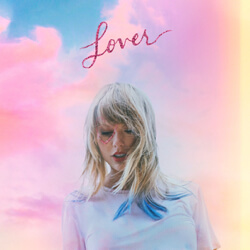 Taylor Swift’s seventh album is a mixed bag. Her last LP before the pandemic and her unexpected, delightful turn to folk, Lover trills with energetic, sometimes-cloying pop and whispered hints at the mature, pensive turn ahead of her. “False God” and “Cruel Summer” remain some of Swift’s catchiest numbers to date and nod back to Reputation’s celebration of womanhood, sensuality and intelligence. “The Archer” and “Death By a Thousand Cuts” are striking and cinematic, replete with synths and symbolism. “Lover” is one of the most daring and sincere love songs of the past decade, and much of the album reads as a sweetly transparent ode to Swift’s ex Joe Alwyn. Other poppy numbers, like the relentlessly sing-song “ME!” and the underwhelming “I Forgot That You Existed” fall flat of the lyrical and sonic abilities Swift’s proven herself capable of. Lover is a transitional work, and it reads as such: Full of nostalgia and confusion, it’s the perfect inflection point for a star who, at the end of the 2010s, found herself caught between her defensive Kanye-beef era and the shimmering resurrection she’d construct throughout the pandemic. —Miranda Wollen
Taylor Swift’s seventh album is a mixed bag. Her last LP before the pandemic and her unexpected, delightful turn to folk, Lover trills with energetic, sometimes-cloying pop and whispered hints at the mature, pensive turn ahead of her. “False God” and “Cruel Summer” remain some of Swift’s catchiest numbers to date and nod back to Reputation’s celebration of womanhood, sensuality and intelligence. “The Archer” and “Death By a Thousand Cuts” are striking and cinematic, replete with synths and symbolism. “Lover” is one of the most daring and sincere love songs of the past decade, and much of the album reads as a sweetly transparent ode to Swift’s ex Joe Alwyn. Other poppy numbers, like the relentlessly sing-song “ME!” and the underwhelming “I Forgot That You Existed” fall flat of the lyrical and sonic abilities Swift’s proven herself capable of. Lover is a transitional work, and it reads as such: Full of nostalgia and confusion, it’s the perfect inflection point for a star who, at the end of the 2010s, found herself caught between her defensive Kanye-beef era and the shimmering resurrection she’d construct throughout the pandemic. —Miranda Wollen
8. Reputation (2017)
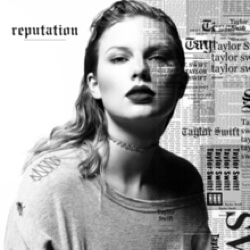 The dark horse of Taylor Swift’s career was met with a mixed-bag of confusion and delight upon its release in 2017, but the last six years have shown that Reputation wasn’t a flop—it’s just misunderstood. Arguably the biggest stylistic leap of Swift’s career, the jump from the glossy pop of 1989 to shadowy synthwork and thumping bass of Reputation is an impressive feat. The best parts of the album don’t come from Swift’s fixation on image or her projection of revenge, but rather from the less flashy songs. The disjointed trap of “Look What You Made Me Do” is still a lowlight, but look to tracks five, nine and 12 for some of the highest highs of not only Reputation, but also Swift’s discography as a whole. Reputation represents a shift in Swift’s subject matter—real grownup love, sex, and complicated feelings around fame and relationships both romantic and otherwise drive the narrative. Not to mention, it’s just 55 minutes of high-energy pop, with Swift in control of every moment. —EJ
The dark horse of Taylor Swift’s career was met with a mixed-bag of confusion and delight upon its release in 2017, but the last six years have shown that Reputation wasn’t a flop—it’s just misunderstood. Arguably the biggest stylistic leap of Swift’s career, the jump from the glossy pop of 1989 to shadowy synthwork and thumping bass of Reputation is an impressive feat. The best parts of the album don’t come from Swift’s fixation on image or her projection of revenge, but rather from the less flashy songs. The disjointed trap of “Look What You Made Me Do” is still a lowlight, but look to tracks five, nine and 12 for some of the highest highs of not only Reputation, but also Swift’s discography as a whole. Reputation represents a shift in Swift’s subject matter—real grownup love, sex, and complicated feelings around fame and relationships both romantic and otherwise drive the narrative. Not to mention, it’s just 55 minutes of high-energy pop, with Swift in control of every moment. —EJ
-

-

-

-

-

-

-

-

-

-

-

-

-

-

-

-

-

-

-

-

-

-

-

-

-

-

-

-

-

-

-

-

-

-

-

-

-

-

-

-

 On Speak Now, her third full-length, Taylor Swift whispers her secrets into the eager ears of millions. Like Fearless she’s still telling you about the boy who broke her heart and what she would have said if only she’d had the chance. This time, though, the boys are superstars and those imaginary conversations aren’t taking place in high school hallways. Here, Swift is growing up, and her lyrics are too. You see hints of it on songs like “Mean,” where she boldly quips to her critics, “All you are is mean/ And a liar/ And pathetic/ And alone in life.” And on “Dear John,” where she laments her John Mayer tryst with a wizened “I should have known.” Perhaps she should have.
On Speak Now, her third full-length, Taylor Swift whispers her secrets into the eager ears of millions. Like Fearless she’s still telling you about the boy who broke her heart and what she would have said if only she’d had the chance. This time, though, the boys are superstars and those imaginary conversations aren’t taking place in high school hallways. Here, Swift is growing up, and her lyrics are too. You see hints of it on songs like “Mean,” where she boldly quips to her critics, “All you are is mean/ And a liar/ And pathetic/ And alone in life.” And on “Dear John,” where she laments her John Mayer tryst with a wizened “I should have known.” Perhaps she should have. Taylor Swift is never not thinking about the big picture, and she returned to the business of image-making on her cryptic and catchy 10th album, Midnights. Where Reputation was an entire record devoted to image and even revenge on those who had defaced her, Swift speaks a more subtle language on Midnights. While it was pitched as something of a concept album—“the stories of 13 sleepless nights scattered throughout my life”—it probably could have been framed like any of her other releases. But Swift knows her all-too-attentive fans (and haters) will assign the album an aesthetic anyways, so why not control the narrative herself? So she shaped these 13 songs into an on-brand all-nighter.
Taylor Swift is never not thinking about the big picture, and she returned to the business of image-making on her cryptic and catchy 10th album, Midnights. Where Reputation was an entire record devoted to image and even revenge on those who had defaced her, Swift speaks a more subtle language on Midnights. While it was pitched as something of a concept album—“the stories of 13 sleepless nights scattered throughout my life”—it probably could have been framed like any of her other releases. But Swift knows her all-too-attentive fans (and haters) will assign the album an aesthetic anyways, so why not control the narrative herself? So she shaped these 13 songs into an on-brand all-nighter. Taylor Swift is a gracious pop star. For those who worship her music, disappointment is rare. evermore finds her stretching her legs and following in folklore’s dainty footsteps. Gone again are the big hooks and radio-ready singles of her past. The focus here is on the stories, many of which spotlight people other than Swift herself, both real and imagined. Her all-star collaborators on both folklore—released just five months prior—and evermore prominently include The National’s Aaron Dessner, as well as his brother Bryce, and Swift’s Lover producer Jack Antonoff.
Taylor Swift is a gracious pop star. For those who worship her music, disappointment is rare. evermore finds her stretching her legs and following in folklore’s dainty footsteps. Gone again are the big hooks and radio-ready singles of her past. The focus here is on the stories, many of which spotlight people other than Swift herself, both real and imagined. Her all-star collaborators on both folklore—released just five months prior—and evermore prominently include The National’s Aaron Dessner, as well as his brother Bryce, and Swift’s Lover producer Jack Antonoff.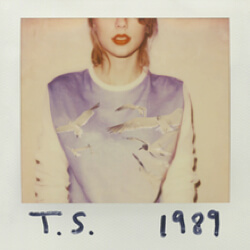 Taylor Swift has tried her hand at all kinds of genre variations throughout her career, but only once has she achieved an entire album of pop perfection. Cut to 2014. Swift is flying high after releasing her masterpiece Red, and the world is unfolding before her. Rather than linger in the pop-country middleground where she found great success, Swift went full pop mastermind on 1989, named for her birth year. Pulling from the sweeping pop of the era in which she was born and working with hit master Max Martin, Swift was able to weave 1980s new wave with gargantuan hooks and ultimately surpass the tired EDM-infused pop of the early 2010s—and outlast most of the blah radio pop of that time. From start to finish, 1989 might be the most cohesive listening experience of Swift’s entire discography. From the high stakes of “Out of The Woods” and lust of “Wildest Dreams” to the verve of “Style” and self-discovery of “Clean,” 1989 is maybe the most important album of Swift’s career. All these years later, it still sounds good as new. It deserves to be remembered as one of the best American pop albums of all time. —EJ
Taylor Swift has tried her hand at all kinds of genre variations throughout her career, but only once has she achieved an entire album of pop perfection. Cut to 2014. Swift is flying high after releasing her masterpiece Red, and the world is unfolding before her. Rather than linger in the pop-country middleground where she found great success, Swift went full pop mastermind on 1989, named for her birth year. Pulling from the sweeping pop of the era in which she was born and working with hit master Max Martin, Swift was able to weave 1980s new wave with gargantuan hooks and ultimately surpass the tired EDM-infused pop of the early 2010s—and outlast most of the blah radio pop of that time. From start to finish, 1989 might be the most cohesive listening experience of Swift’s entire discography. From the high stakes of “Out of The Woods” and lust of “Wildest Dreams” to the verve of “Style” and self-discovery of “Clean,” 1989 is maybe the most important album of Swift’s career. All these years later, it still sounds good as new. It deserves to be remembered as one of the best American pop albums of all time. —EJ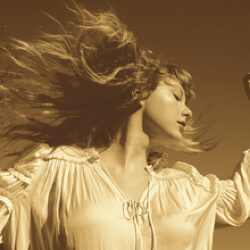 While Fearless is just as country as Taylor Swift it marks Swift’s transition from starlet to international pop sensation. Much like the debut, Fearless traverses all the best and worst feelings of adolescence, but where Taylor Swift occasionally falters beneath the weight of first-time pressure, Fearless takes flight. In Swift’s own words: “It’s the first kiss / It’s flawless / really something / it’s fearless.” And for every swoon on the title track or “The Best Day,” there’s the “roller coaster” of “The Way I Loved You” and underside of first love on “Fifteen”—which genuinely encapsulates that age better than any coming-of-age book starring an angsty, pimply teenage boy in a school uniform ever will. And what’s more Taylor Swift than the line “We were both young when I first saw you / I close my eyes and the flashback starts”? “Love Story” and “You Belong With Me” deserve all the praise they’ve received since they were released and more. The big stories and setpieces and rush of serotonin that define those tracks represent everything good about Taylor Swift and Fearless, the golden boy of her catalog. —EJ
While Fearless is just as country as Taylor Swift it marks Swift’s transition from starlet to international pop sensation. Much like the debut, Fearless traverses all the best and worst feelings of adolescence, but where Taylor Swift occasionally falters beneath the weight of first-time pressure, Fearless takes flight. In Swift’s own words: “It’s the first kiss / It’s flawless / really something / it’s fearless.” And for every swoon on the title track or “The Best Day,” there’s the “roller coaster” of “The Way I Loved You” and underside of first love on “Fifteen”—which genuinely encapsulates that age better than any coming-of-age book starring an angsty, pimply teenage boy in a school uniform ever will. And what’s more Taylor Swift than the line “We were both young when I first saw you / I close my eyes and the flashback starts”? “Love Story” and “You Belong With Me” deserve all the praise they’ve received since they were released and more. The big stories and setpieces and rush of serotonin that define those tracks represent everything good about Taylor Swift and Fearless, the golden boy of her catalog. —EJ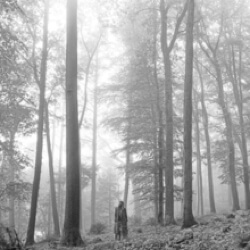 In 2020, Taylor Swift leveled the hell up. There isn’t a better way to phrase it. The bright-eyed-country-musician-turned-serious-pop-titan didn’t need to—she could’ve quit music in 2019 and still left behind a lasting pop discography. But on folklore, which arrived less than 24 hours after she announced it with a
In 2020, Taylor Swift leveled the hell up. There isn’t a better way to phrase it. The bright-eyed-country-musician-turned-serious-pop-titan didn’t need to—she could’ve quit music in 2019 and still left behind a lasting pop discography. But on folklore, which arrived less than 24 hours after she announced it with a 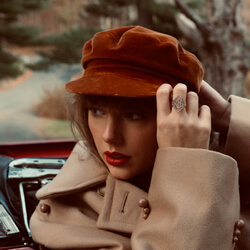 Red is Taylor Swift’s best album because it’s the epitome of everything she does best. It’s built on all the “Taylor-isms” that have come to define her identity as a pop artist: songs about falling in and out of love too fast and too hard, bizarre but somehow relatable metaphors, writing that quashes any wall between the personal and the universal, impeccable hindsight, middle-of-the-night revelries. A breakup album at its core, Red traverses the peaks and valleys of being in love and then abruptly single while charting Swift’s sonic leap from country sweetheart to pop juggernaut.
Red is Taylor Swift’s best album because it’s the epitome of everything she does best. It’s built on all the “Taylor-isms” that have come to define her identity as a pop artist: songs about falling in and out of love too fast and too hard, bizarre but somehow relatable metaphors, writing that quashes any wall between the personal and the universal, impeccable hindsight, middle-of-the-night revelries. A breakup album at its core, Red traverses the peaks and valleys of being in love and then abruptly single while charting Swift’s sonic leap from country sweetheart to pop juggernaut.






































